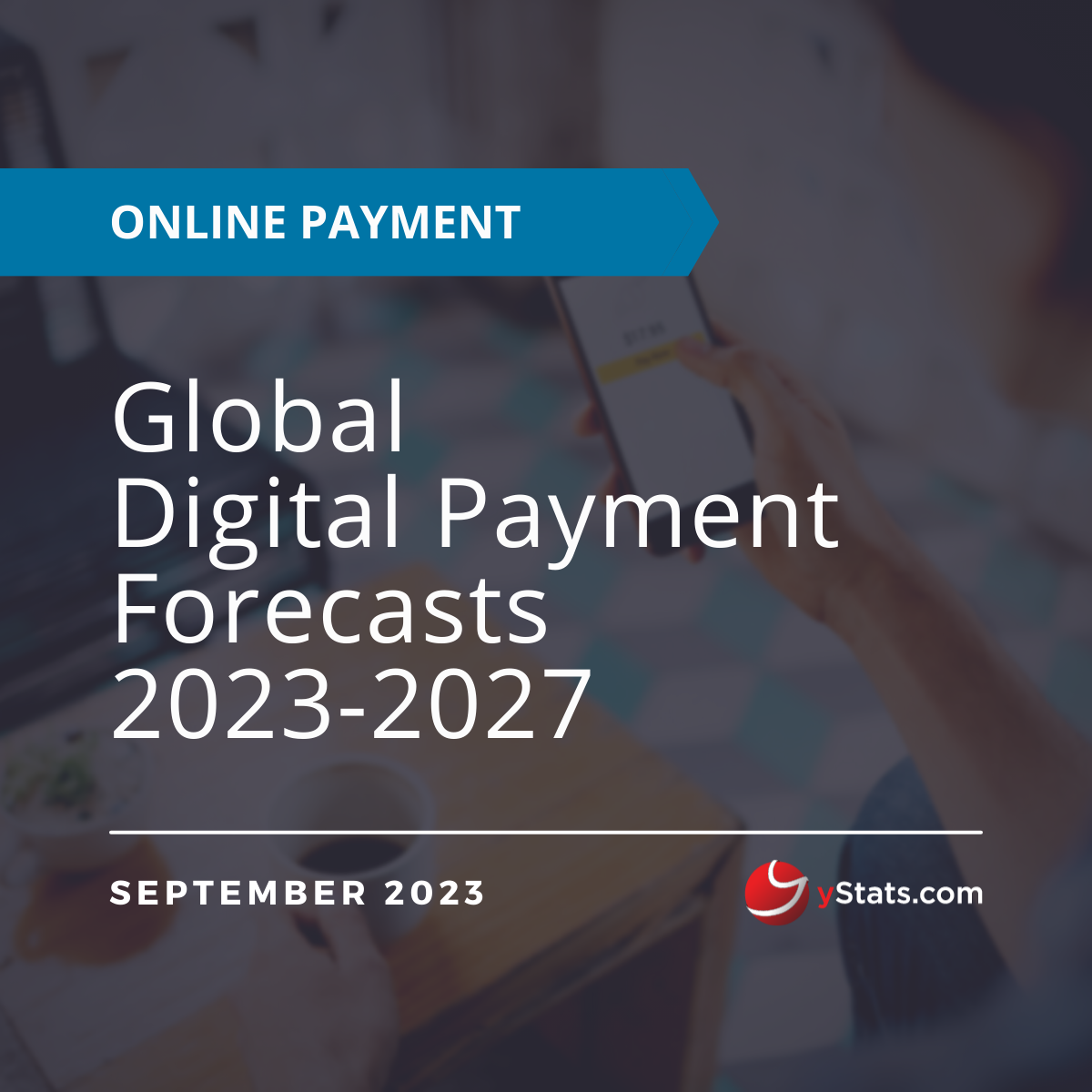Description
Countries Covered: China, Japan, South Korea, India, Indonesia, Singapore, Philippines, UK, Germany, France, Italy, Russia, USA, Canada, Brazil, Mexico, Argentina, Colombia, Chile, UAE, Saudi Arabia, Egypt, Nigeria.
Pages: 94
Publication Date: 20/09/2023
Questions Covered in the Report:
- What is the size of the global digital payments market in 2023 and how is it projected to grow through 2030?
- How high is the non-cash transaction volume in different regions globally and how is it projected to change by 2026?
- How many adults in China have used digital wallets daily in 2022?
- By how much will the real-time payments volume grow by 2027 in different regions and countries worldwide?
- How much will real-time payments make up of total electronic payments across the global regions by 2027?
Key Findings:
Global cashless transactions are projected to grow at approximately a 16% CAGR between 2023 and 2026, surpassing a two trillion mark in volume: new yStats.com report.
Asia-Pacific continues to be the largest contributor to the global non-cash transaction volume
The global digital payment industry has embraced a new normal, with many individuals opting for digital payments over cash. While non-cash transactions were particularly prevalent in many regions during the pandemic, the adoption of these payment methods is expected to continue increasing, as revealed in the new yStats.com publication. Global cashless transactions are projected to grow at an approximate 16% CAGR between 2023 and 2026, with Asia-Pacific expected to lead in these numbers. This region already had a well-established non-cash payment market before 2023, and over the next four years, these figures are projected to steadily rise.
Egypt is forecasted to display one of the most significant growths in real-time payment transactions
By 2030, the global digital payments market is expected to more than double in size, signaling a continuous shift towards digital payments worldwide, according to the new yStats.com report. With the declining use of cash, more and more individuals are turning to real-time payments as a digital alternative. In 2022, India led the way in the real-time payment market, with forecasts suggesting nearly a tripling of growth by 2027. In the global ranking of real-time payment markets, Brazil secured the second position in 2022, with an expected CAGR of over 30% by 2027, nearly quadrupling its transaction volume. China held the third position in 2022, with a projected low double-digit CAGR by 2027.
Concerning the growth of real-time payments markets, Latin American countries such as Argentina and Colombia are expected to experience significant growth by 2027, displaying a mid-range double-digit CAGR for both nations. However, the leader in market growth by 2027 is anticipated to be Egypt, transitioning from single-digit million real-time payment transactions in 2022 to high triple-digit million transactions by 2027, exhibiting a triple-digit CAGR. This is not surprising, considering that real-time payments in the MEA (Middle East and Africa) and Southeast Asia regions accounted for nearly three-quarters of total electronic payments in the region, with this share projected to further increase until 2027, surpassing three-quarters.






